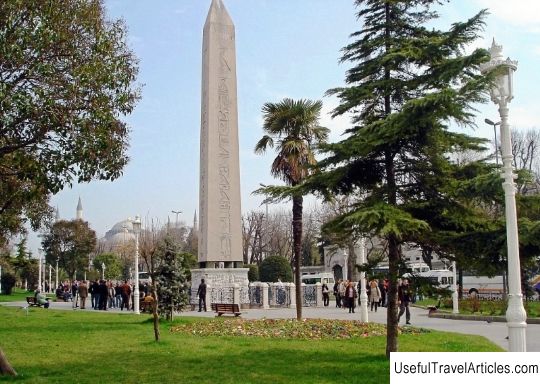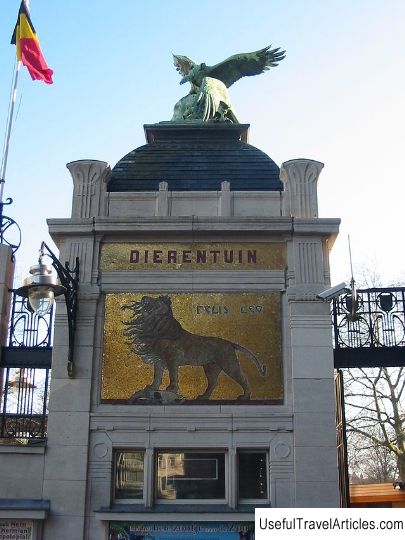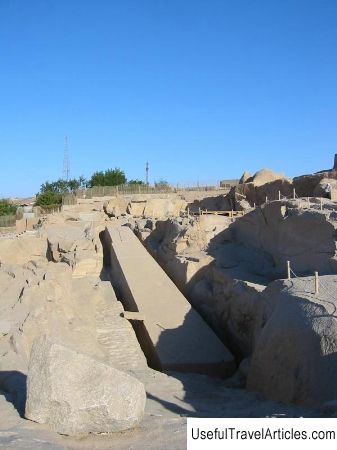Egyptian obelisk (Dikilitas) description and photos - Turkey: Istanbul
Rating: 8,9/10 (489 votes) 
Egyptian obelisk (Dikilitas) description and photo - Turkey: Istanbul. Detailed information about the attraction. Description, photographs and a map showing the nearest significant objects. The title in English is Egyptian obelisk (Dikilitas). Photo and descriptionOn the shore of the most majestic sight of Turkey - the Bosphorus Strait, there is the so-called Egyptian obelisk or Dikilitash, which is definitely worth visiting for tourists coming here. It was built back in the 15th century. BC e. under Pharaoh Thutmose III. The Egyptians erected two obelisks in the southern part of the Great Temple of the sanctuary of Amun Ra, at the seventh pylon in front of the temple complex in the city of Karnak (Mexico region of Egypt), which were carved from a single piece of rare pink and white Aswan granite. They were a memory of the military valor of Pharaoh Thutmose III and his army in hostilities in Mesopotamia. One of the obelisks was originally transported from Luxor to Alexandria, and the second (in 390) - from Luxor to Istanbul by Emperor Theodosius I and is currently located on the Hippodrome Square, next to the Blue Mosque. The Egyptian Obelisk is one of the oldest monuments located not only in this square, but, perhaps, in all of Istanbul. The obelisk dates back to around the 16th century BC. In other words, the obelisk is about three and a half thousand years old. For some time, the Egyptian obelisk was named in honor of the emperor "Obelisk of Theodosius". The countless riches of the city were plundered or destroyed by the crusaders, who attacked Constantinople at the beginning of the 13th century. And only due to its impressive size, the obelisk became one of the few monuments of the city that managed to survive then. Initially, according to historians, the obelisk weighed 400 tons and had a height of about 32.5 m. For transportation from Egypt to Constantinople, it had to be cut into two parts. The lower part of the obelisk was lost on the way. Several copies of this architectural monument are available in Egypt and in the largest cities of Europe. Periodic earthquakes, the strength of which was up to 6-7 on the Richter scale, which occurred in Istanbul every 100 years, could not change the original appearance of the obelisk. On all four of its sides you can see Egyptian hieroglyphs that depicted heroic deeds that took place during the reign of Pharaoh Thutmose III. On the top of it was depicted the Pharaoh and the god Amon, and under these images a kite was carved. Some of the human figures were destroyed over time, some of the letters were erased from the obelisk and forever disappeared. Not perfectly flat, the base of the obelisk has undergone changes and was supplemented with four bronze amphoras. In ancient times, entertaining games were often held on the water channels attached to these amphoras. At the very bottom of the obelisk, there is a pedestal dating from 389. On all four sides of the pedestal, the `` Estamty '' was depicted. On this pedestal are carved out of marble the emperor himself, his family and advisers watching the chariot horse races, the imperial box, the construction of the obelisk. Besides them, musicians and dancing girls are depicted here, as well as slaves swearing allegiance to the emperor.      We also recommend reading Val di Rabbi description and photos - Italy: Val di Sole Topic: Egyptian obelisk (Dikilitas) description and photos - Turkey: Istanbul. |




